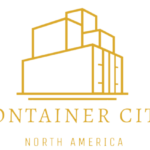Do You Need a Permit for a Shipping Container in Los Angeles?

Do You Need a Permit for a Shipping Container in Los Angeles?
Shipping containers have become a popular choice for storage in Los Angeles. Businesses, homeowners, builders, and contractors rely on them because they’re affordable, secure, weather-resistant, and easy to place on almost any property. But one question comes up often: do you need a permit for a shipping container in Los Angeles?
The short answer is: sometimes, but not always. For many standard storage situations, a permit may not be required. And even when one is needed, the process is usually simple and focused on safety and proper placement.
Whether you’re looking for storage shipping containers in LA or browsing cargo shipping containers for sale, understanding the rules helps you get your container delivered without delays.
When You Don’t Need a Permit
Many storage containers placed temporarily in Los Angeles don’t require a permit. The city understands that containers are commonly used during moving, construction projects, remodeling, or business overflow storage.
A permit is generally not required when the container:
- Is used only for storage
- Is temporary, not a permanent structure
- Has no utilities like electrical or plumbing
- Sits on private property, not in the public right-of-way
- Does not block sidewalks, emergency paths, or easements
Homeowners using a container briefly for household storage, or contractors using one as a jobsite tool shed, typically do not need any city approval.
When a Permit May Be Required
A permit becomes more likely in specific circumstances. The following situations could trigger a review from the Los Angeles Department of Building and Safety:
Long-term or permanent placement
If your container becomes a long-term structure, the city may treat it as an accessory building, especially if it remains on-site indefinitely.
Using the container as a workspace
Adding HVAC, insulation, or electricity to convert the container into an office or workshop often requires approval and may trigger additional building code requirements.
Placement in restricted zones
Some neighborhoods have tighter visual, safety, or zoning restrictions, particularly residential or special planning areas. In these zones, the city may look more closely at container placement.
Modifications
Cutting the container, adding windows and doors, installing utilities, or making structural changes may require a building permit to ensure safety and code compliance.
Industrial setups
Stacked containers or multi-unit container structures often need review for stability, access, and fire safety.
Even so, many businesses in Los Angeles use containers long-term without excessive permitting requirements, especially in commercial and industrial zones where storage use is common.
Why Permits Are Easier Than They Sound
The city’s main concerns are safety, proper placement, neighborhood compatibility, and secure installation. For standard storage use, approvals are straightforward and often granted quickly.
Compared to traditional construction or building additions, the permit process for a storage container is generally much simpler, less expensive, and faster to complete.
How to Get a Permit for a Shipping Container in Los Angeles
(Simple step-by-step guide)
Step 1: Check your zoning
Use the city’s Zoning Information and Map Access System (ZIMAS) to look up your zoning designation. This helps determine what types of accessory structures are allowed on your property.
Step 2: Contact LADBS
The Los Angeles Department of Building and Safety (LADBS) processes all container-related permits. You can apply online or visit a local office for guidance on the correct permit type.
Step 3: Clarify how the container will be used
Be ready to answer:
- Is the container temporary or permanent?
- Is it strictly for storage or also a workspace?
- Will any utilities be added, such as electrical or plumbing?
- Where on the property will it be placed?
Temporary storage-only containers are usually the easiest to approve.
Step 4: Provide a basic site sketch
If requested, provide a simple drawing that shows property boundaries, existing structures, the container’s position, and setbacks from property lines. This helps the city verify that your placement is safe and compliant.
Step 5: Submit the application
Submit your application and any required documents to LADBS. For simple storage use, review times are often relatively quick.
Step 6: Follow placement rules
Once approved, make sure the container:
- Sits on level, stable ground
- Does not block driveways, access roads, or fire lanes
- Respects required setbacks
- Is kept in good condition and free of graffiti
What If You Skip the Permit?
In many short-term scenarios, a permit is not required. However, for long-term or modified containers, skipping the permit can lead to problems such as fines, enforcement actions, or being required to remove the container.
Taking a little time to check the rules up front can prevent headaches later, especially if you plan to sell the property, undergo inspections, or expand operations.
Final Thoughts: Permits Are Simple and Sometimes Not Needed
For the majority of homeowners and businesses in Los Angeles, using a shipping container for storage is straightforward. Temporary storage containers rarely need a permit, and even when a permit is required, the process is quick, manageable, and focused on basic safety.
Whether you’re storing tools during a remodel, setting up a jobsite locker, or adding long-term storage to a commercial property, containers are one of the most flexible options available in LA.
If you’re ready to explore storage shipping containers in LA and compare cargo shipping containers for sale,you can find local options and container sizes tailored to Los Angeles properties here: Shipping Containers in Los Angeles.



